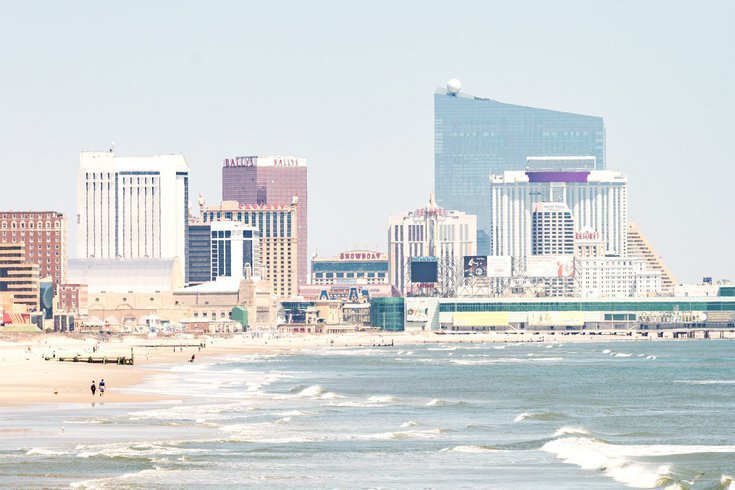
July 16, 2024
 Thom Carroll/for PhillyVoice
Thom Carroll/for PhillyVoice
A man bought nearly 400 chips that were used by the Playboy Hotel & Casino in Atlantic City before it shuttered in 1984.
To ward off severe flooding, Atlantic City has begun construction on the Baltic Avenue Canal, which was built more than a century ago to manage stormwater runoff. The underground drainage system has been largely defunct since the 1960s.
Built in 1912, the canal runs about 1.8 miles from south of the Atlantic City Expressway to Absecon Inlet. It drains a 775-acre area that serves the flood-prone neighborhoods of Ducktown, Westside, Midtown, Bungalow Park and Inlet. At 10 feet wide and 8 feet tall, the canal is capable of holding more than 1.1 million cubic feet of stormwater when its floodgates are operational.
“This has been on the drawing board for years, and we’re excited to see it finally happening,” Atlantic City Mayor Marty Small Sr. said. “This project will go a long way in preventing nuisance flooding in our neighborhoods, ultimately improving the quality of life for our residents and businesses."
The canal fell out of service in the 1960s because its timber floodgates at either end had been destroyed, allowing stormwater to rush into the neighborhoods the canal was meant to protect during high-tide events. New stainless steel gates were installed in 2018 and pumps were added at Fisherman's Park — the northern end of the canal — to make portions of the system operational again.
The $22 million project that's now underway will include the installation of six large pumps along the Atlantis Avenue flood gate system to send stormwater into the surrounding bay. Screens will be added at either end of the canal to filter out trash and other debris. The project also includes installing an automated system that will allow the canal to be managed remotely.
Atlantic City is considered one of the most vulnerable coastal cities for flooding in the United States due to a combination of sea-level rise and the sinking of land area. A study published earlier this year in the journal Nature found that about 9,700 homes in Atlantic City will be exposed to flooding by 2050. Since the time the Baltic Avenue Canal was built, surrounding waters have risen by about 18 inches — more than double the global average.
Climate researchers at Rutgers University project that tidal flooding events — which can happen even on sunny days — will become increasingly frequent in Atlantic City. They happened less than once a year in the 1950s and rose to an average of eight times a year between 2007 and 2016. By the end of the century, researchers project high-tide flooding will happen at least 95 days a year.
In the wake of Superstorm Sandy in 2012, Atlantic City invested heavily in rock barriers and seawalls to protect the immediate coast and boardwalks from flooding. Reactivating the Baltic Avenue Canal will aim to address the severity of inland flooding as it becomes more common.
The canal project will be funded by a series of grants from sources including the U.S. Economic Development Agency, Federal Emergency Management Agency and New Jersey Department of Environmental Protection.